Abstract
Patients with nephrotic syndrome have low blood levels of 25 hydroxyvitamin D (25-OH-D) most probably because of losses in urine, and a vitamin D-deficient state may ensue. The biological consequences of this phenomenon on target organs of vitamin D are not known. This study evaluates one of these target organs, the bone. Because renal failure is associated with bone disease, we studied six patients with nephrotic syndrome and normal renal function. The glomerular filtration rate was 113±2.1 (SE) ml/min; serum albumin, 2.3±27 g/dl; and proteinuria ranged between 3.5 and 14.7 g/24 h. Blood levels of 25-OH-D, total and ionized calcium and carboxy-terminal fragment of immunoreactive parathyroid hormone were measured, and morphometric analysis of bone histology was made in iliac crest biopsies obtained after double tetracycline labeling. Blood 25-OH-D was low in all patients (3.2-5.1 ng/ml; normal, 21.8±2.3 ng/ml). Blood levels of both total (8.1±0.12 mg/dl) and ionized (3.8±0.21 mg/dl) calcium were lower than normal and three patients had true hypocalcemia. Blood immuno-reactive parathyroid hormone levels were elevated in all. Volumetric density of osteoid was significantly increased in three out of six patients and the fraction of mineralizing osteoid seams was decreased in all. Evidence for an increase in active lacunae (bone-osteoclast interface) occurred in three out of six patients and in inactive (Howship's lacunae) bone resorption in six out of six. The data indicate that the loss of 25-OH-D in urine of patients with nephrotic syndrome and normal renal function may result in a decrease of blood levels of ionized calcium, secondary hyperparathyroidism and enhanced bone resorption. In addition, the vitamin D-deficient state causes osteomalacia as evidenced by defective mineralization and increased osteoid volume.
Full text
PDF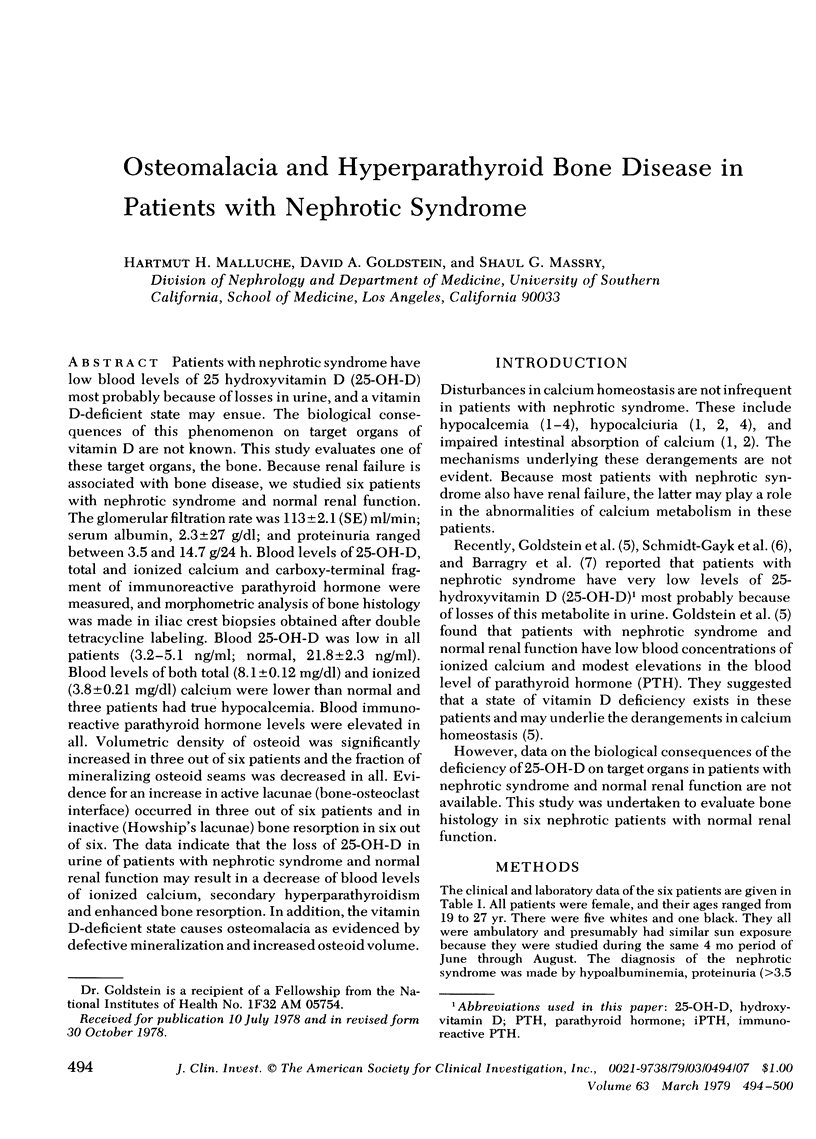
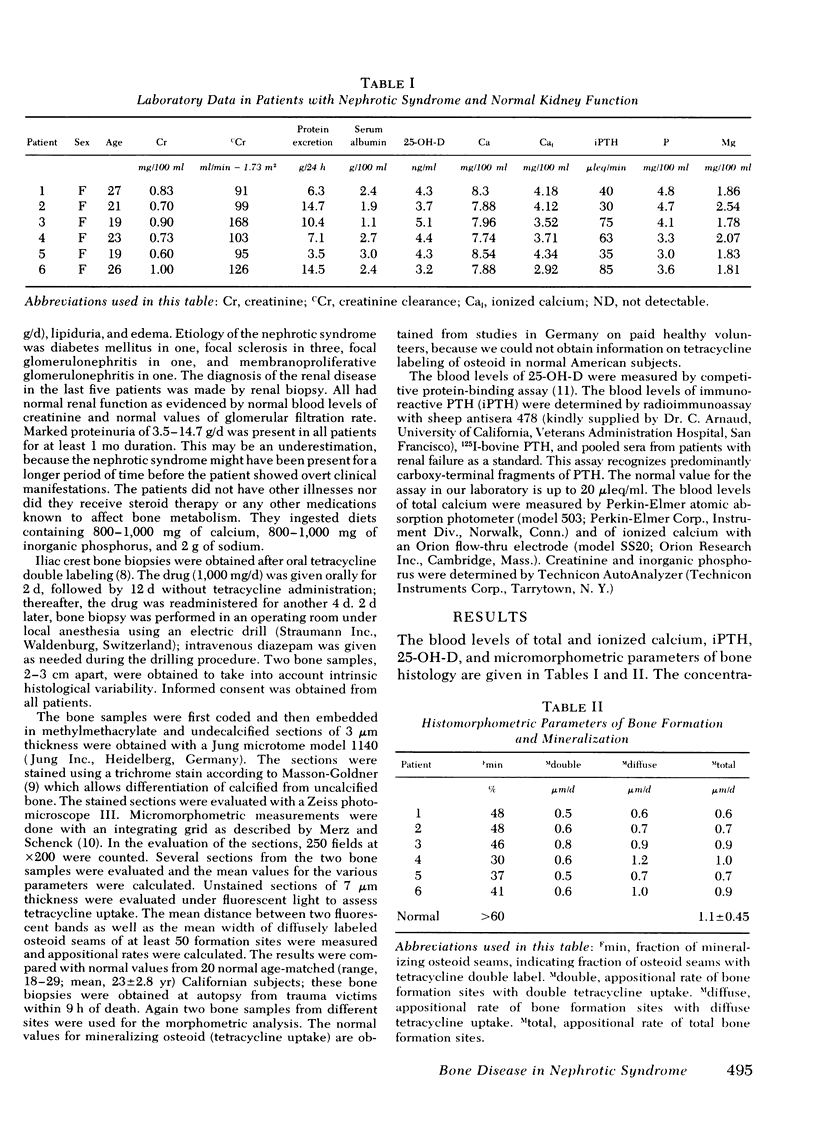

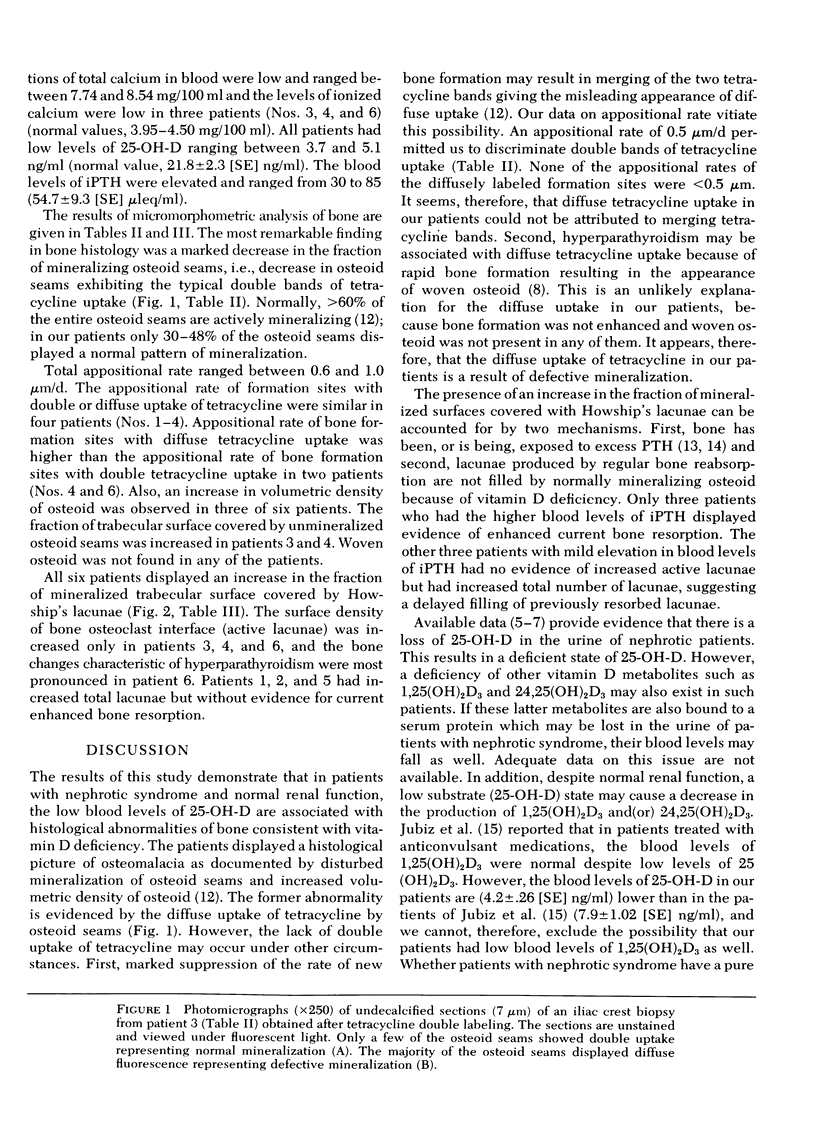
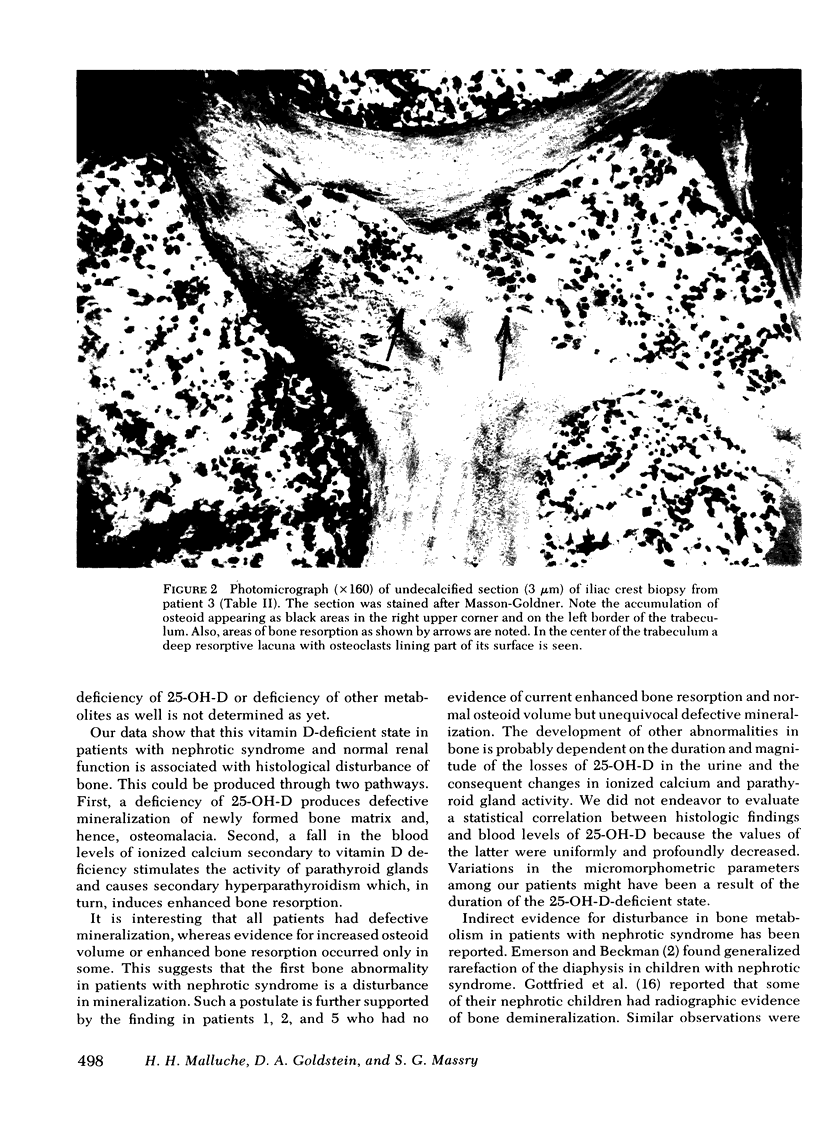
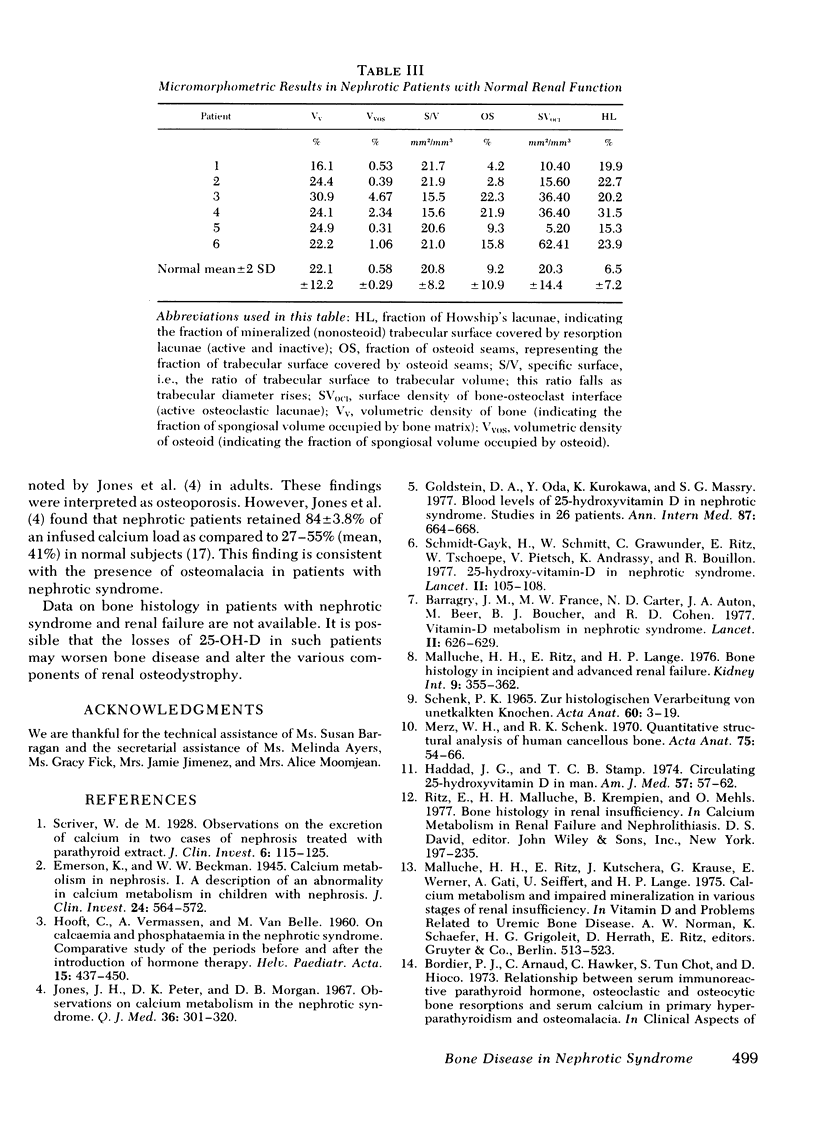
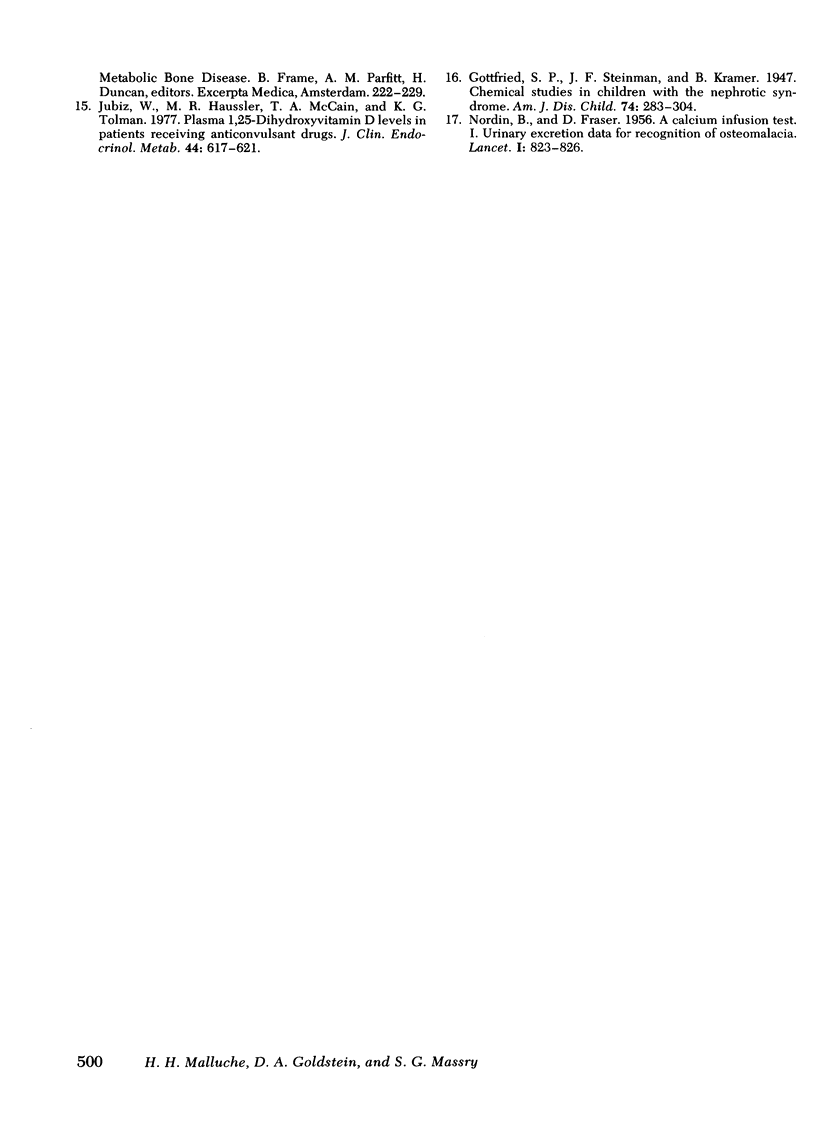
Images in this article
Selected References
These references are in PubMed. This may not be the complete list of references from this article.
- Barragry J. M., France M. W., Carter N. D., Auton J. A., Beer M., Boucher B. J., Cohen R. D. Vitamin-D metabolism in nephrotic syndrome. Lancet. 1977 Sep 24;2(8039):629–632. doi: 10.1016/s0140-6736(77)92498-9. [DOI] [PubMed] [Google Scholar]
- Emerson K., Beckman W. W. CALCIUM METABOLISM IN NEPHROSIS. I. A DESCRIPTION OF AN ABNORMALITY IN CALCIUM METABOLISM IN CHILDREN WITH NEPHROSIS. J Clin Invest. 1945 Jul;24(4):564–572. doi: 10.1172/JCI101636. [DOI] [PMC free article] [PubMed] [Google Scholar]
- Goldstein D. A., Oda Y., Kurokawa K., Massry S. G. Blood levels of 25-hydroxyvitamin D in nephrotic syndrome. Studies in 26 patients. Ann Intern Med. 1977 Dec;87(6):664–667. doi: 10.7326/0003-4819-87-6-664. [DOI] [PubMed] [Google Scholar]
- HOOFT C., VERMASSEN A., VAN BELLE M. On calcaemia and phosphataemia in the nephrotic syndrome. Comparative study of the periods before and after the introduction of hormone therapy. Helv Paediatr Acta. 1960 Nov;15:437–450. [PubMed] [Google Scholar]
- Haddad J. G., Stamp T. C. Circulating 25-hydroxyvitamin D in man. Am J Med. 1974 Jul;57(1):57–62. doi: 10.1016/0002-9343(74)90768-2. [DOI] [PubMed] [Google Scholar]
- Jones J. H., Peters D. K., Morgan D. B., Coles G. A., Mallick N. P. Observations on calcium metabolism in the nephrotic syndrome. Q J Med. 1967 Jul;36(143):301–320. [PubMed] [Google Scholar]
- Jubiz W., Haussler M. R., McCain T. A., Tolman K. G. Plasma 1,25-dihydroxyvitamin D levels in patients receiving anticonvulsant drugs. J Clin Endocrinol Metab. 1977 Apr;44(4):617–621. doi: 10.1210/jcem-44-4-617. [DOI] [PubMed] [Google Scholar]
- Malluche H. H., Ritz E., Lange H. P., Kutschera L., Hodgson M., Seiffert U., Schoeppe W. Bone histology in incipient and advanced renal failure. Kidney Int. 1976 Apr;9(4):355–362. doi: 10.1038/ki.1976.42. [DOI] [PubMed] [Google Scholar]
- Merz W. A., Schenk R. K. Quantitative structural analysis of human cancellous bone. Acta Anat (Basel) 1970;75(1):54–66. doi: 10.1159/000143440. [DOI] [PubMed] [Google Scholar]
- NORDIN B. E., FRASER R. A calcium-infusion test. I. Urinary excretion data for recognition of osteomalacia. Lancet. 1956 Jun 2;270(6927):823–826. doi: 10.1016/s0140-6736(56)91295-8. [DOI] [PubMed] [Google Scholar]
- SCHENK R. ZUR HISTOLOGISCHEN VERARBEITUNG VON UNENTKALKTEN KNOCHEN. Acta Anat (Basel) 1965;60:3–19. [PubMed] [Google Scholar]
- Schmidt-Gayk H., Grawunder C., Tschöpe W., Schmitt W., Ritz E., Pietsch V., Andrassay K., Bouillon R. 25-hydroxy-vitamin-D in nephrotic syndrome. Lancet. 1977 Jul 16;2(8029):105–108. doi: 10.1016/s0140-6736(77)90118-0. [DOI] [PubMed] [Google Scholar]
- Scriver W. de M. OBSERVATIONS ON THE EXCRETION OF CALCIUM IN TWO CASES OF NEPHROSIS TREATED WITH PARATHYROID EXTRACT. J Clin Invest. 1928 Aug;6(1):115–125. doi: 10.1172/JCI100184. [DOI] [PMC free article] [PubMed] [Google Scholar]




